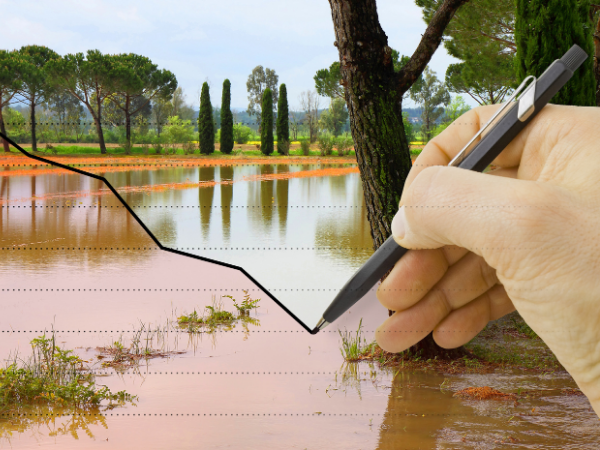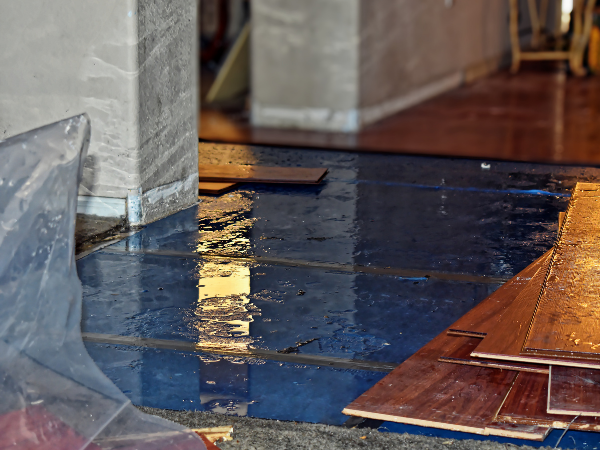
Building an inclusive and detailed water damage assessment report can be time consuming. But how do you know you're including the right info? As a skilled restoration professional, this is an important part of any of your water damage jobs. It should be the foundation of your restoration projects and give homeowners, property managers, and insurance companies the must-have details that help them understand the extent of damage.
So what should you include in your report?
Water damage assessment reports cover everything from the water source to the extent of damage to the cost of repair. If you're just starting out in the restoration industry, check out these five in-depth descriptions of what to include in your water damage assessment report.
1. Water Damage Category
No matter how it hits, water damage is a painful subject for property owners, but their safety should always come first. Noting the category of water damage the property has experienced will give your customer insight into how hazardous their environment is as a result, and it will allow you to provide recommendations on whether they need to evacuate the building as a whole or avoid certain rooms.
Here are the three main categories of water damage*:
- Category 1: Clean Water
Clean water has little to no contamination. Causes of clean water damage range from rainwater to overflowing bathtubs to burst water pipes. Clean water damage typically doesn't pose an immediate safety threat but may turn into category 2 water damage if left unaddressed. - Category 2: Gray Water
Gray water contains some pollutants, often from laundry detergent or bath soap. Impurities in this type of water can lead to more severe property damage and health issues for building inhabitants over time. It is wise to advise property owners or managers not to handle any damage caused by gray water without being properly equipped. - Category 3: Black Water
Black water damage is the most hazardous type water damage. Types of black water include sewage, floodwaters, or water that includes hazardous materials like oil and grease. Black water damage should always be handled by professionals with the proper gear.
Customers will appreciate how thorough your report is when you include not only the category of water damage from your assessment but also a clear definition of the cause.
2. Damaged Components

Another thing to note when you're assessing a water restoration site is the damaged components in each room of the building. Here are just a few things to note:
- Electrical damage/hazards
- Damaged furniture or appliances
- Type of flooring damaged
This is great for summarizing what may need to be replaced not only for the property owner but the insurance company, as well. It can also help you determine how to properly dispose of damaged materials.
In addition to the damaged components, you'll need to determine the extent of the damage.
3. Damage Level
One of the ways to determine the extent of the damage is by determining how porous the affected materials are. Which building components soaked up a lot of water and which parts didn't?
Is the drywall of the basement bone dry, slightly spongy, or is there a large crack in it and it's falling apart? Is the living room carpet fully soaked or barely affected?
If a home has not been properly taken care of immediately after a flood or other water damage, you should also list the affects of water sitting in a building for long amounts of time. That can include various types of mold and other harmful bacteria.
4. Photos
Documenting issues you find during a water damage assessment is beneficial to all parties–the homeowner or property manager, your restoration company, and any insurance company involved. It will both prove the extent of damage and help justify all quoted repairs on your report.
5. Suggested Repairs
All of the previous points of this article will help you determine the repairs that need to be made, which you should include in your water damage assessment report.
Be specific about repairs. Does carpet need to be replaced and drywall thrown out? Or will cleaning be enough?
Not sure what else needs to be included in this section? Consider these three questions to help you and the customer think through some of the specifics:
- Which tools will it take to complete water mitigation?
Be sure to include the tools needed for every part of the job, from drying to cleaning and sanitizing to the actual repairs and restoration process. This may include fans, dehydrators, cleaners, and renovation equipment. - Are you prepared for unseen water damage?
In the world of restoration, there's almost always hidden damage. It's important to be transparent with customers and let them know this upfront, so they're not caught off guard halfway through the job with additional expenses. Explain to the customer that repairs may differ slightly based on what your restoration team encounters on the job. - Is there need for a debris management system?
Come up with a system to get any debris out of the building you're working in and to the dump. Make sure it's both efficient and approved by your customer.
Just Starting Out in Water Restoration?
If you're just starting a water restoration business, there are tons of resources to help you get on your feet. Check out Equipter's article, "7 Tips for Starting a Water Restoration Business," for some essential beginning steps.
Equipter also offers an array of innovative equipment to help raise your efficiency level on the job. To check out our full fleet of restoration equipment, click the link below or connect with us directly at 717-661-3591.
*The information on the three categories of water damage was gathered from various sources. Most state that these categories are designated as such by the IICRC (Institute of Inspection, Cleaning and Restoration Certification). Explore their website for more information on how to obtain the specifics and more certifications to set you apart from your competition.
